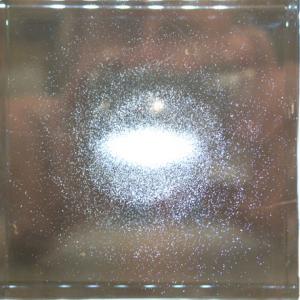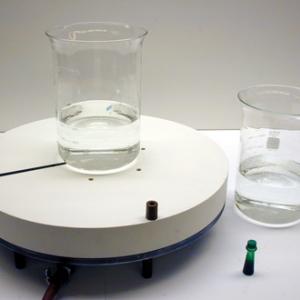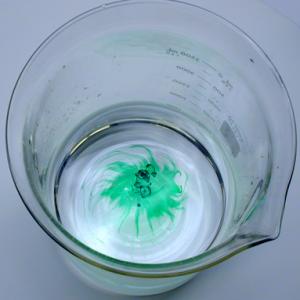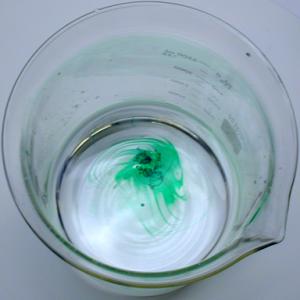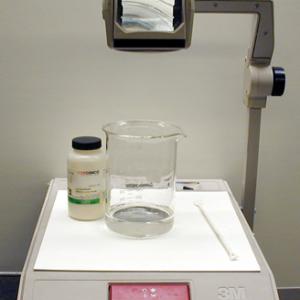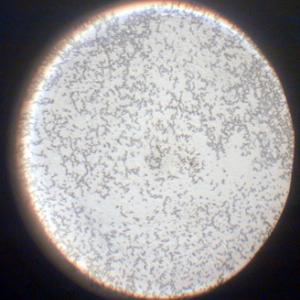College of Liberal Arts & Sciences
8C10.60 - Galaxy Model/Spiral Galaxies
Put about 1500 ml of water in the 4000 ml beaker. Center the beaker on the rotating air table. Rotate the table for about 30 seconds or until the water is moving with the table. Stop the table rotation and while the water is still continuing to rotate drop in a drop of food coloring. Note the spiral arms that are formed by your 'Galaxy' and how neatly they wrap as the water continues to rotate.
NOTE: This will require practice by the professor.
Fill the 400 or 600 ml beaker about 1/2 full of water and place on an overhead projector. Drop in a pinch of Lycopodium powder and stir with a stirring rod. Watch the spiral formations and the 'Galactic Clumping' that takes place.
- Keith Aldridge, "Conversation of Angular Momentum in a Rotating Fluid", TPT, Vol. 12, # 8, Nov. 1974, p. 493.
- Steven K. Blau, "Galaxy Clusters In Formation", Physics Today, June 2015, p. 20.
- John Wettlaufer, "The Universe in a Cup of Coffee", Physics Today, May 2011, p. 66.
- "Hubble Sees Anemic Spiral", Ad Astra, Spring 2014, p. 3.
- Daniel Engber, "Why is the Milky Way a Spiral?" Popular Science, March 2014, p. 82.
- R. H. Sanders, G. T. Wrixon, "The Center of the Galaxy", Scientific American, April 1974, p. 67.
- "Countdown...03", Ad Astra, Winter 2013, p. 3."
- Janice VanCleave, "Spirals," Astronomy for Every Kid - 101 Easy Experiments That Really Work, p. 154-155.
- Edmund Scientific's, Scientifics, "Milky Way Galaxy Star Crystal", Award winning toys and gifts.
- Frederico Lelli, Enrico M. Teodoro, Filippo Fraternali, Allison W. S. Man, Zhi-Yu Zhang, Carlos De Breuck, Timothy A. Davis, Roberto Maiolino, "A Massive Stellar Bulge in a Regularly Rotating Galaxy 1.2 Billion Years After the Big Bang", Science, Vol. 371, # 6530, Feb. 12, 2021, p. 713.
Disclaimer: These demonstrations are provided only for illustrative use by persons affiliated with The University of Iowa and only under the direction of a trained instructor or physicist. The University of Iowa is not responsible for demonstrations performed by those using their own equipment or who choose to use this reference material for their own purpose. The demonstrations included here are within the public domain and can be found in materials contained in libraries, bookstores, and through electronic sources. Performing all or any portion of any of these demonstrations, with or without revisions not depicted here entails inherent risks. These risks include, without limitation, bodily injury (and possibly death), including risks to health that may be temporary or permanent and that may exacerbate a pre-existing medical condition; and property loss or damage. Anyone performing any part of these demonstrations, even with revisions, knowingly and voluntarily assumes all risks associated with them.
